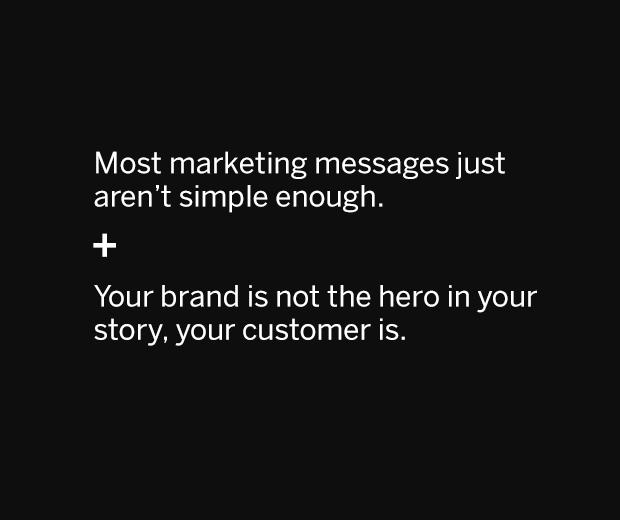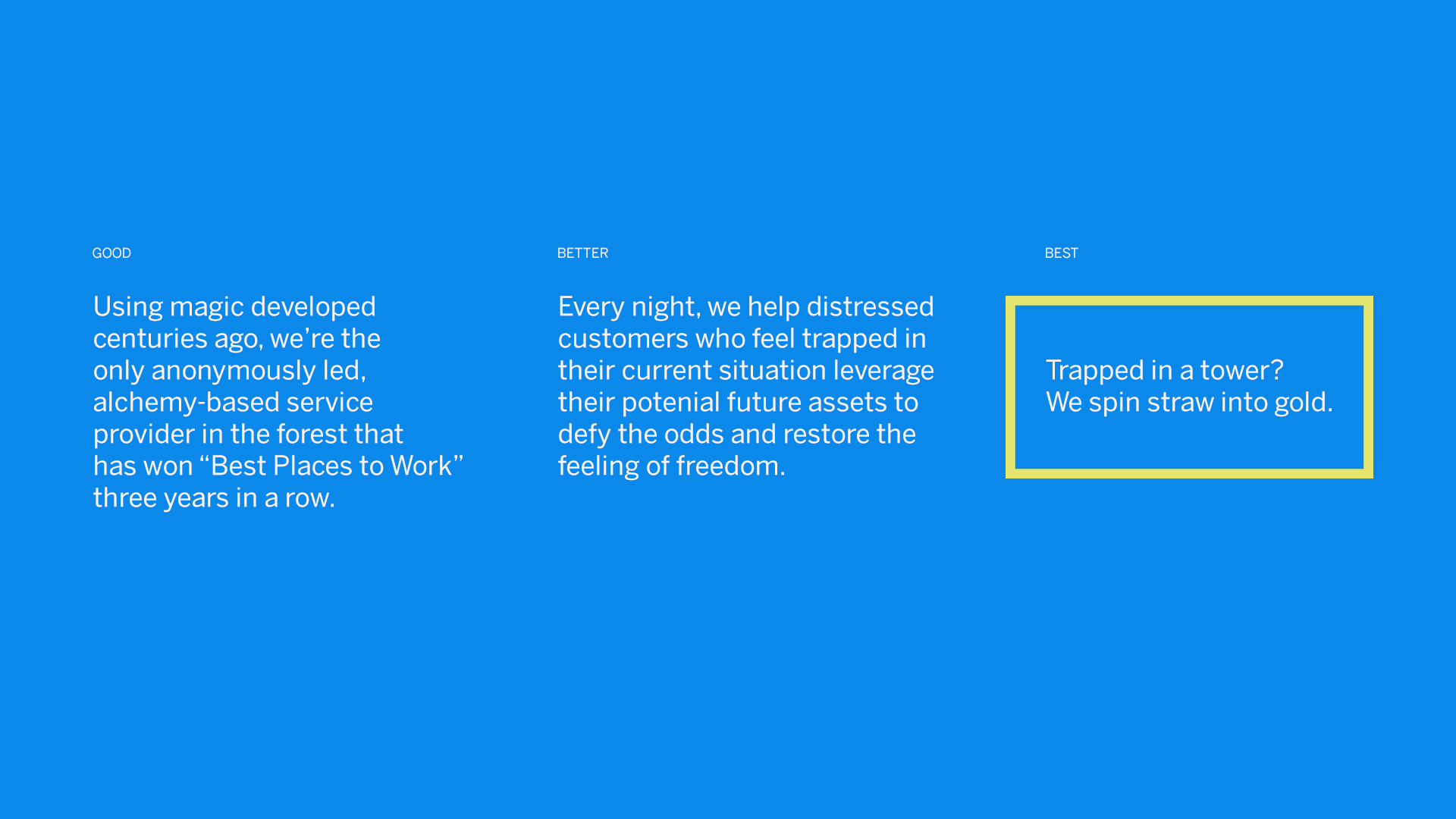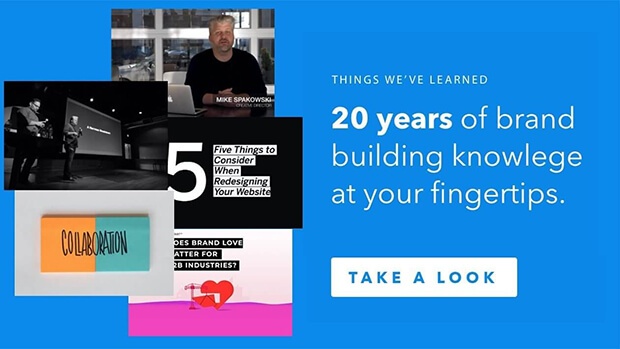How to Reframe Your Messaging to Make Marketing More Effective
Let’s talk about how you can make your marketing more powerful by rethinking how you communicate with your customers, and the best part is it’s super simple. But first, a little back story.
A lot of marketers feel stuck.
If you’ve been struggling to get better results from your company’s marketing (or you’re wondering how some brands break though and why you might not be), this is for you.
Like most companies, you probably have all the usual marketing channels in place. Website, emails, brochures, social media, pitch decks. Things are fine, but marketing performance and sales leads have plateaued.
You might have tried to boost performance with marketing tactics like Facebook or Google Ads or SEO optimization, but still aren’t seeing much of an increase in anything – except your budget. You’re doing everything right, so what’s the deal?
Two simple marketing concepts that people get wrong.
There are two core ideas in branding (and marketing) that most businesses often get wrong.
The first is that most marketing messages just aren’t simple enough.
The second, is that your company is not the hero in your story, your customer is.
“Well of course,” you might say. “Everybody knows that.” But over and over again, we see organizations (especially B2B businesses) with overly complex messaging and brand positioning that focuses mainly on how great they are.

First: Most marketing messages just aren’t simple enough.
If customers don’t understand what your company is offering, or how it will make their lives better, they don’t care. What do most people care about? Anything that helps them excel at (or keep) their jobs. Saving money, increasing sales, improving processes or keeping competition at bay.
Customers want to know what you do, and how it benefits them – usually in a single sentence. And yet, most brands fail to ever state it that simply. Why? Because most brands either see themselves as too complicated, or they mistake simplicity with unsophistication and it bruises their ego.
Here’s a story. About a decade ago, we were working with a really great medical claims clearinghouse. When a patient visited a doctor’s office, this company would electronically process the patient’s information with the insurance company, reducing the time it took to reimburse the physician. They built a business on the simple line “We get doctors paid fast.” Was it too simple? Was it unsophisticated?
As competitors were popping up, so were more complex descriptions of similar services. “Your Revenue Improvement Partner.” “Your Physician’s Revenue Cycle Management Company.” “Revenue Responsibility from Patient to Payment.”
Looking back at it, I don’t think anything competitors did (or anything we did, for that matter) was as clear as “We get doctors paid fast.” It’s been over 10 years and I still remember that simple line.
Why did the language of an entire industry shift? Probably because they felt it was too simple to justify what they wanted to charge for the service. Anything that simple must not be valuable.
Businesses sometimes protect their egos inside of big, complex words to illustrate how sophisticated their products are. It happens at the expense of clarity.
If it takes too much energy for a customer to understand what you do and why it matters to them, they’ll most likely keep searching until they find a competitor that can better explain it to them. Clear, simple messages that address the benefits to the customer is where a lot of marketing misses the mark.
So it’s easy right? Not really. Simple (and still compelling) is difficult to do. Believe me, at Atomicdust, we spend more time arguing (internally) about seemingly simple language than we do about visual design.
Second: The truth is, no one really cares about you (except me).
Most brands put the focus on themselves, when it should be placed on their customers.
A simple shift in that perspective can make your marketing more effective. Marie Forleo calls this “The Spotlight Method.”
Rather than talk about your products, your people or your history when you create marketing content, shine the spotlight on your customer. Talk about their problems, their business and their ambitions. Customers listen more carefully when you’re talking about them instead of yourself.

Echoing this idea, in his great book, Building A Story Brand, author Donald Miller reminds marketers about one simple truth – customers should be the hero in your brand’s story, not the brand itself.
Good stories have three main roles. The hero, the villain, and the guide.
- The hero is the main character in the story, and finds themselves in a conflict caused by the villain.
- The villain is the evil force ruining the hero’s happiness.
- The guide is mystic sage that shows the hero the secrets of beating the villain.
Most businesses position their own product or service as the hero. Instead, your brand should be the guide.
Excuse me for a second while I speak in classic 1980’s movies. You are Obi-Wan Kenobi; your customer is Luke Skywalker. You are Q; they are James Bond. You are Mr. Miyagi; your customer is the bullied, new-kid Daniel.
Your job is to guide the hero (your customer) through whatever they have to do to defeat the villain (their problems). Tell customers that you understand their enemy, and that you can show them how to win.
Rather than guiding their customers, a lot of businesses focus on what’s great about their own products and services. “We’re family owned. We’ve been around for 30 years. We have great customer service.” Instead, they should be saying, “We’ll show you how to use the magical power inside of you called the force to defeat the evil empire and save the galaxy.”
What is your brand message?
I aways say that marketing is messaging and frequency. It can be easy for marketers to get wrapped up in the wild, fast pace of the all the latest channels, and loose focus on the core message itself.
If you feel your marketing just isn’t converting sales and driving new customers, ask yourself if your message is clear and simple, and if you’re truly making your customer the hero of the story.
If not, these are two simple things that marketers and brand managers can do to reframe, rethink, and breathe new life into their marketing.
And if you could use a guide on your own marketing journey, we’re always here to help.



